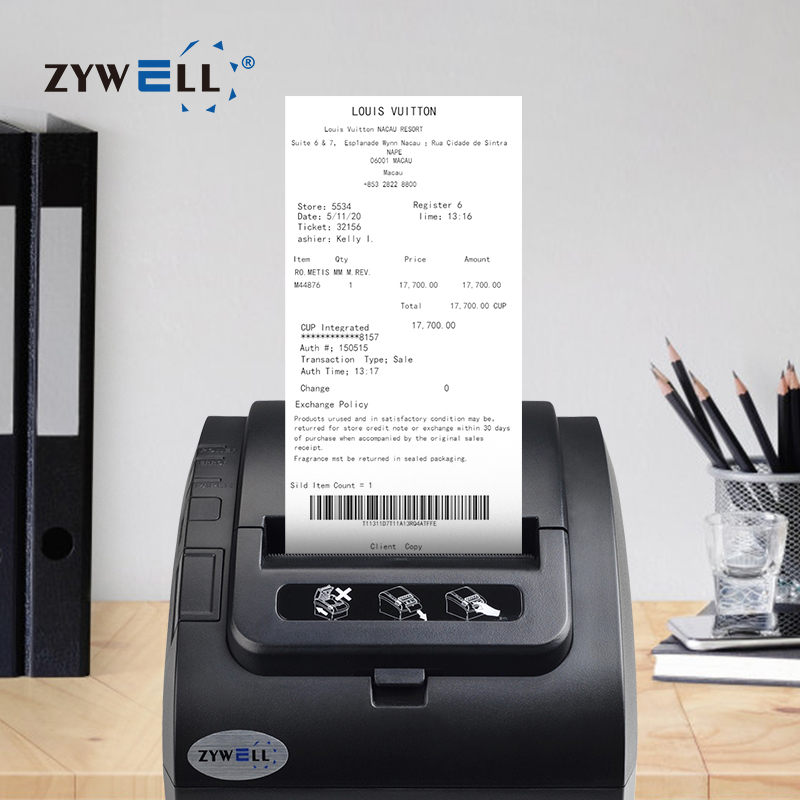ZYWELL thermal printer and pos printer manufacturer supplier in China for more than 20 years.
Major Factors Affecting Thermal Printer Performance
In the retail industry, whether it's a small business or a large supermarket, online or offline retail stores, thermal printing technology plays a crucial role. It provides efficient and high-quality solutions for retail checkouts, package transportation, and receipt printing. However, despite their simplicity and reliability, thermal printers can still encounter malfunctions. Understanding the principles of thermal printing and the causes of potential printing issues can help us better maintain the printers, extend their service life, and ensure the quality and efficiency of our work. Here are several key factors that affect the performance of thermal printing:

Print Head Wear
Thermal printing does not require ribbons or ink cartridges; instead, it uses the print head to directly heat the thermal paper to produce an image. Consequently, the print head is the most critical component in the printing process. The print head comes into direct contact with the thermal paper's thermal coating, leading to more wear and tear compared to thermal transfer print heads. To extend the printer's life, it is recommended to use higher-quality thermal paper, as smoother thermal surfaces can significantly reduce print head wear.
Print Head Cleaning
Regular cleaning of the print head is essential to prevent the accumulation of dust and paper debris, which can affect the transfer of heat. If heat is not effectively transferred to the thermal paper, it not only affects the print quality, causing unclear prints and images, but also risks overheating and damaging the heating elements. Therefore, maintaining the cleanliness of the print head is vital for preserving print quality and extending the printer's lifespan.

Printer Parameter Settings
Printer parameter settings directly impact the printer's lifespan. This includes settings for paper size, print density, and image adjustment. Improper settings, such as a print width larger than the thermal paper width or excessively high print density, can lead to overheating, accelerating print head wear or even burning out the heating elements. Thus, correct settings are crucial for protecting the printer and improving print quality.
Choice of Thermal Paper
The selection of thermal paper directly affects the printer's service life and cost. High-quality thermal paper can enhance print clarity and extend the print head's life. In contrast, lower-quality thermal paper tends to produce poorer images and may require higher temperatures to achieve the desired darkness, which can directly impact the life of the heating elements. Therefore, choosing the appropriate thermal paper is essential for increasing efficiency, print quality, and the printer's service life.
Thermal Printer Mechanisms
The working environment also affects the printer's performance. The accumulation of dust and paper debris significantly impacts the print life and quality. Long-term outdoor production is not suitable for direct thermal printers because thermal paper is sensitive to environmental changes, especially under high temperatures and intense light, which can accelerate the fading of thermal paper.

With proper maintenance and cleaning, thermal printing technology can fully meet the printing needs of businesses and continue to operate, reducing the cost of equipment replacement. ZYWELL provides the best thermal printers for small businesses, creating a higher level of productivity. By understanding and managing the above factors, we can achieve the best performance and longest service life of thermal printers.

Zhuhai zywell is a printer manufacturer and comprehensive high-tech enterprise integrating POS printer design, research and development, production, sales and service.
CONTACT DETAILS
If you have any question, please contact us.















